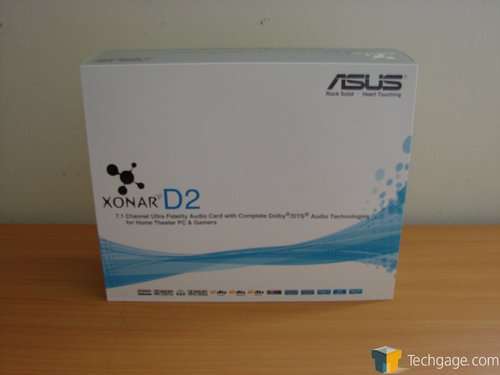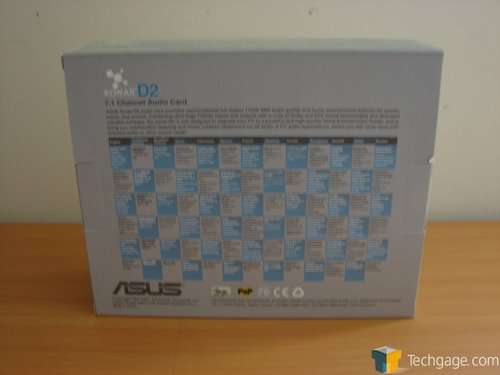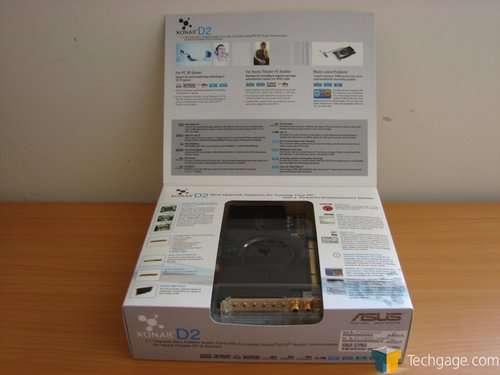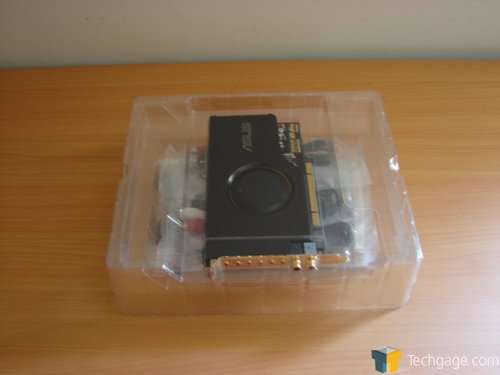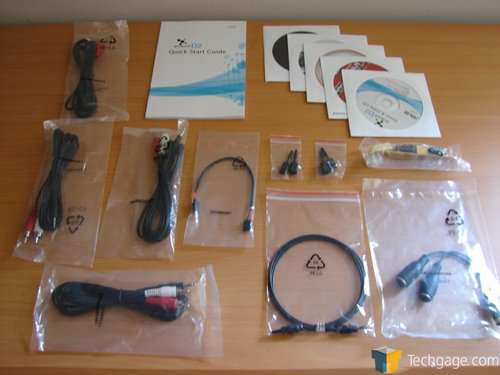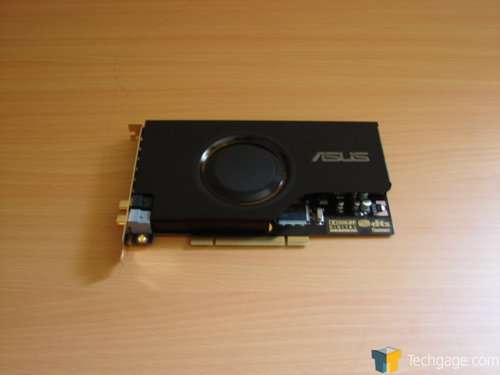- Qualcomm Launches Snapdragon 4 Gen 2 Mobile Platform
- AMD Launches Ryzen PRO 7000 Series Mobile & Desktop Platform
- Intel Launches Sleek Single-Slot Arc Pro A60 Workstation Graphics Card
- NVIDIA Announces Latest Ada Lovelace Additions: GeForce RTX 4060 Ti & RTX 4060
- Maxon Redshift With AMD Radeon GPU Rendering Support Now Available
ASUS Xonar D2 Sound Card
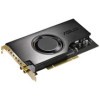
At Computex 2007, ASUS wowed us with their new Xonar range of audio products, aiming to take a chunk of Creative’s market share in the high end PC audio category. Now we’ve got our hands on the ASUS Xonar D2, and we’re putting it to the test. Does the newcomer Xonar D2 have what it takes to challenge the X-Fi?
Page 2 – Packaging & Specifications
The retail packaging of the Xonar D2 is distinctly different from the design commonly seen on ASUS’ motherboard cartons. It features a stylish blue-and-white particle flow design, and features the contemporary Xonar logo design. Overall, it’s a very appealing box, which mimics the design of product boxes for software used in studio applications, and creates the impression of a ‘prosumer’ product.
The front of the box features a lift-up flap which reveals the Xonar card itself, which is protected by a PET shell. Also behind the flap is a listing of product features, accessories, and bundled software. When viewed from the bottom, the package allows a potential customer to see the full complement of gold-plated input ports the Xonar D2 offers (Bling, bling). ASUS has outdone itself on this packaging – this is superb product presentation.
The Xonar D2 product ships in a two-level PET shell, which both cradles the card itself and contains the bundled accessories. The bundle is very impressive – the Xonar package contains everything you need to connect the card to a multichannel A/V receiver for HTPC use. Four 3.5mm stereo miniplug to dual RCA connector cables are included, as well as an optical cable and four Toslink to mini optical converters. Also included is a slot cover with a 6-pin mini-DIN MIDI port, and a dongle which breaks the single MIDI connector out into two 5-pin MIDI connectors.
The Xonar D2 card itself features several styling cues that are meant to create the impression of a high-end audio component. The gold-plated connectors, gold-foil decals, and the large black metal shield contribute to that image. The card is also longer than both the Sound Blaster Audigy4 and the Razer Barracuda AC-1, about as long as most midrange video cards.
On the Xonar product box, ASUS provides a comprehensive list of the sound card’s specifications and capabilities, which are impressive to say the least.
|
Specification
|
Comment
| |
| Model | Xonar D2/PM/A | The Xonar D2/PM package is the whole enchilada, so to speak. It includes an expansion slot cover with a MIDI I/O module |
| Audio Core | ASUS AV200 | This chipset, which Asus tells us was ‘developed in cooperation with C-Media’, appears to be a re-branded CMI8788 OxygenHD codec chip, which is the same chip that we found on the Razer Barracuda AC-1. |
| Channels | 7.1 | ASUS states that their 118dB SNR applies to all channels of the Xonar D2 card, and that other cards typically only meet these specs on their front two channels.) |
| Digital Resolution | 24-bit | 24-bit audio is the same resolution that’s used by the DVD audio specification, so this card will have no trouble getting the most out of a 24-bit format digital recording. |
| Output Signal-To-Noise Ratio (SNR) | 118dBA | The SNR race rushes onward…This figure beats the recently-reviewed Razer Barracuda’s SNR by 1dB. But can you really hear this? |
| Input Signal-To-Noise Ratio (SNR) | 118dBA | Not many cards can boast input SNR figures equivalent with their output SNR. This holds some promise for ultra-high-quality recording. |
| Output Total Harmonic Distortion + Noise (THD+N) | 0.004% (-108dB) | 0.004% (-108dB) |
| Input Total Harmonic Distortion + Noise (THD+N) | 0.004% (-108dB) | The fact that the Xonar D2 has the THD+N equal to its output stage makes this an even better option for use in a DAW. This feature also improves the functionality of an exclusive feature which ASUS calls ALT – an internal audio link between the output and input stages, enabling high-quality loopback recording without a loopback cable. |
| Output Frequency Response | >10Hz to 90kHz (all channels) | This expansive frequency response, which extends well beyond the range of human hearing at either end, ensures that distortion will be extremely low within the audible range (20Hz-20kHz), for the cleanest sound possible. |
| Input Frequency Response | >10Hz to 46kHz (all channels) | This recording frequency response allows extremely high quality recordings to be made, ensuring that even the very highest harmonics and deepest subharmonics can be detected and preserved on the recording. |
| Digital-to-Analog Conversion (Digital Sources) | Burr-Brown PCM1796 x4 (123dB SBR, 24bit/192kHz Max) | These four extremely high-quality stereo DACs by Burr-Brown (regarded as among the finest in the world) ensure that audiophile-quality digital-to-analog conversion will be available to all output channels of the Xonar D2. (The Razer Barracuda AC-1 card used slightly lesser-quality AKM DACs.) |
| Analog-to-Digital Conversion (Analog Inputs) | Cirrus Logic CS5381 (120dB SNR, 24bit/192kHz Max) | Even the card’s analog inputs get the high-end treatment with a high-quality Cirrus Logic ADC. The ADC’s high SNR ensures that a minimum of noise is added to the input signal, or during ALT recording. |
| Analog Playback Sample Rate & Resolution | Up to 192kHz @ 16/24 bit? | This high maximum sample rate ensures that this card won’t add artifacts when playing digital material that samples at lower rates. |
| Analog Recording Sample Rate & Resolution | Up to 192kHz @ 16/24 bit` | ASUS takes great pains to make it clear that the input signal path is capable of handling the resolution and quality of the output signal path, to lend credibility to the Xonar’s ALT recording feature. |
| I/O Full Scale Voltage | 2.0Vrms (5.65vpp) | This card is capable of extreme voltage output, which is useful for driving inefficient earphones such as in-ears. Beware, however, that this level of output can cause hearing damage, and may overdrive the inputs of some devices. |
| S/PDIF Digital Output Modes | Up to 192kHz @ 16/24-bit, Dolby Digital, DTS, WMA-Pro | This card supports both Dolby Digital and DTS output, for receivers and preamp/processors that support the two formats. This is useful for HTPCs, but is standard fare for most sound cards. Not all receivers or pre/pros support input at the full 192kHz rate, however. |
| S/PDIF Digital Input | Up to 192kHz @ 16/24-bit( | This allows the card to accept digital inputs at full resolution, for bit-perfect recording. |
| ASIO 2.0 Driver Support | Up to 192kHz @ 16/24-bit | ASIO is a low-latency protocol for digital audio, which is most useful for studio applications, where equipment such as digital mixers require a low-latency connection with the sound card. |
| Analog I/O | 4x 3.5mm jacks (output), 2x 3.5mm jacks (input), 2x 4-pin headers (CD-In, Aux-In) on card | It’s nice to have the ports directly on the sound card’s I/O panel, unlike the mildly inconvenient Razer HD-DAI connector on the Barracuda AC-1 which we reviewed earlier. Gold-plated connectors ensure positive signal transfer. |
| Digital I/O | These connectors serve as both optical jacks and RCA-style coaxial digital cable jacks. Optical connections provide the most positive signal transfer over long distances, however. Mini-Optical to Toslink converters (4) are supplied. | These connectors serve as both optical jacks and RCA-style coaxial digital cable jacks. Optical connections provide the most positive signal transfer over long distances, however. Mini-Optical to Toslink converters (4) are supplied. |
| Digital I/OOther I/O | MPU-401 compliant bracket with converter | The supplied dongle converts the mini-DIN connector on the bracket to the 180-degree DIN-5 connector used by MIDI devices. |
| Driver Features | Dolby® Headphone, Virtual Speaker, Pro-Logic IIx, Digital Live; DTS® Connect, Interactive, Neo:PC; EAX® 1.0, 2.0; A3D® 1.0, DirectSound® Hardware Acceleration, supports DirectX 9.0 7.1-channel output | The driver features list contains DSP algorithms developed by the biggest names in theater sound processing, such as DTS and Dolby Labs, as well as a variety of EAX®, Aureal3D®, and DirectSound® codecs. Support for EAX HD and EAX versions after 2.0 is absent, however, since Creative prefers to leverage their proprietary technology against the competition instead of sharing it. |
Now that we’ve had our first impressions, let’s take a closer look at the componentry of the card itself.
|
|
Support our efforts! With ad revenue at an all-time low for written websites, we're relying more than ever on reader support to help us continue putting so much effort into this type of content. You can support us by becoming a Patron, or by using our Amazon shopping affiliate links listed through our articles. Thanks for your support!




